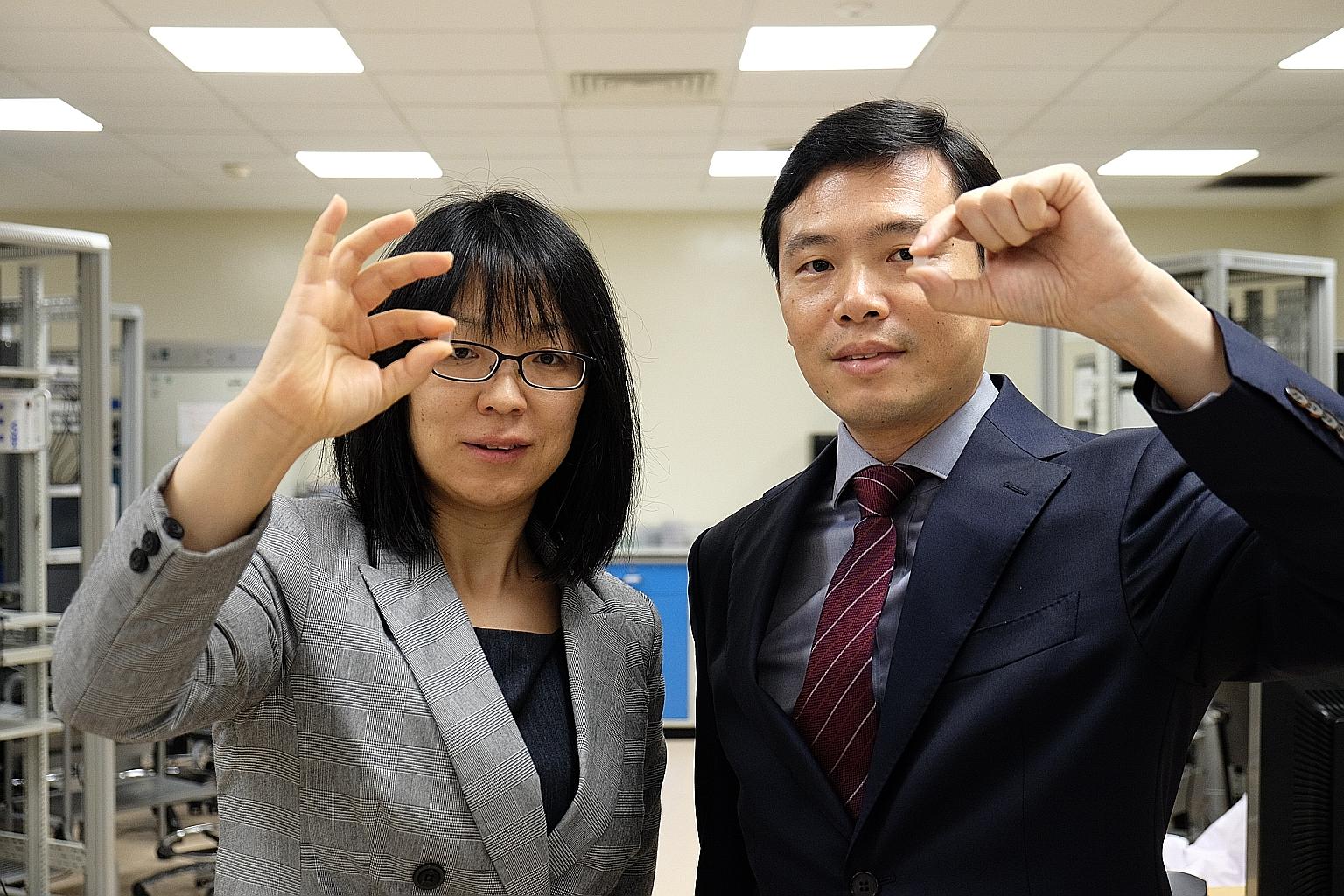Sights set on more effective way to treat eye diseases
'Contact lens' patch could meet need for localised, long-lasting, efficient drug delivery
Sign up now: Get ST's newsletters delivered to your inbox

Assistant Professor Wang Xiaomeng (left) and Professor Chen Peng with the "contact lens" patch to treat eye diseases. Painless and minimally invasive, the patch could be a viable alternative to the current treatment options, which face poor patient compliance.
PHOTO: NANYANG TECHNOLOGICAL UNIVERSITY
Cheryl Teh
Follow topic:
A "contact lens" patch for a more effective alternative to treating common eye diseases has been developed by a team from Nanyang Technological University (NTU).
With this patch, common debilitating eye diseases such as glaucoma and macular degeneration could be treated in a more painless and efficient way.
The 2mm by 2mm patch is covered with nine biodegradable microneedles loaded with drugs that are delivered into the eye in a controlled release.
Shaped like a pyramid for optimal tissue penetration, each needle is thinner than a strand of hair and is made of hyaluronic acid, a substance found in the eye that is used often in eye drops.
After pressing the patch onto the eye surface briefly and gently - much like putting on contact lenses - the drug-containing microneedles detach by themselves and stay in the cornea, releasing the drug over time as they dissolve.
Current treatment methods are hindered by the eye's natural reactions, such as blinking and tearing, while eye injections are not only painful but also pose a high risk of eye damage and infection.
Unlike topical applications and eye drops, which can be washed away easily, the eye patch works around the body's defences and the microneedles are not affected by blinking and tearing.
This way of treating eye diseases was developed by a team led by Professor Chen Peng from NTU's School of Chemical and Biomedical Engineering (SCBE), with clinical insights from the Singapore National Eye Centre's Associate Professor Gemmy Cheung.
The team also includes Assistant Professor Wang Xiaomeng from NTU's Lee Kong Chian School of Medicine, and Assistant Professor Xu Chenjie and research fellow Aung Than from SCBE.
Prof Chen, who took the lead on the project, said the contact lens patch could realise the medical need for localised, long-lasting and efficient eye drug delivery.
"The microneedles are made of a substance found naturally in the body, and we have shown in lab tests on mice that they are painless and minimally invasive," he said.
"If we successfully replicate the same results in human trials, the patch could become a good option for eye diseases that require long-term management at home."
Topical drugs such as eye drops and ointments require repetitive applications with a high dosage, as less than 5 per cent of the drug is absorbed by the eye each time and the eye naturally clears out much of the drug.
The current methods of treatment also release only a short burst of drugs that is not ideal for treating chronic eye diseases, such as glaucoma, which requires slow and steady treatment.
The research team has filed a patent and is working on further improving the technology that goes into the eye patch. It is also looking to partner clinician scientists to study the feasibility of conducting clinical trials.

